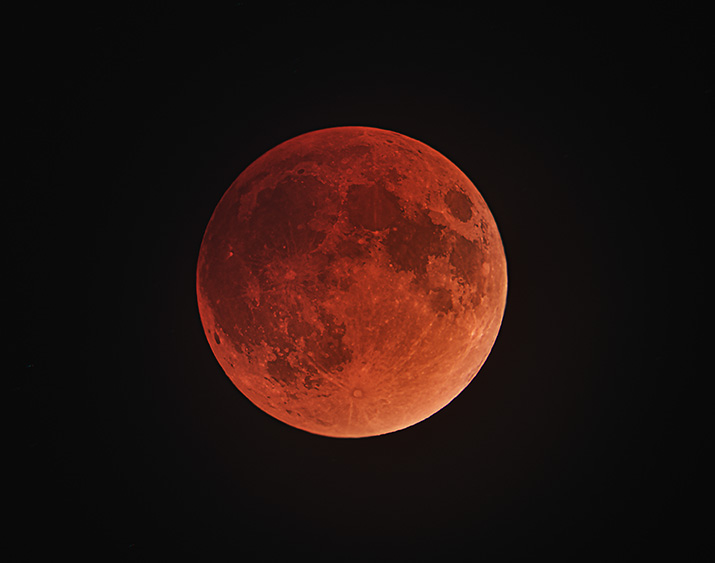
|
Date: Jan. 31, 2018 - Location: Davis Mountains west of Fort Davis, TX Click on the image below to view at higher resolution. |

|
On Jan. 31, 2018, as seen in the western states of the US, a total lunar eclipse took place coinciding with Moon's orbital perigee. (The Moon's closest approach to the Earth.) This is somewhat of an infrequent, if not rare, occurrence. The net effect of this celestial occurrence is an eclipse of the largest full Moon visible from the Earth. This is sometimes referred to as a Super Moon eclipse. When the Moon passes through the Earth's shadow, the light from the sun is blocked and the Moon darkens. During the eclipse, a portion of the Sun's light is refracted, or bent, by the Earth's atmosphere and dimly illuminates the Moon. This effect is strongest in the red portion of the spectrum. This causes the Moon to appear a dim reddish brown hue. The term Blood Moon is often used to describe the appearance of a total lunar eclipse. This particular eclipse took place during the second full Moon in January. When there are two full Moons in the same calendar month the second one is called a Blue Moon. Since all three of these applies, this eclipse is called The Super Blue Blood Moon Eclipse of Jan. 2018.
1http://www.timeanddate.com/eclipse/facts-lunar-eclipse.html
|